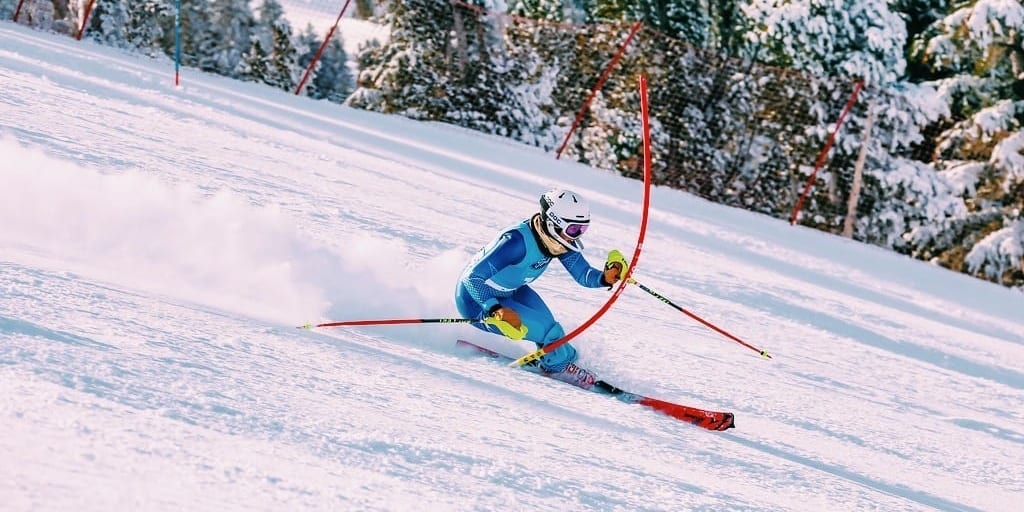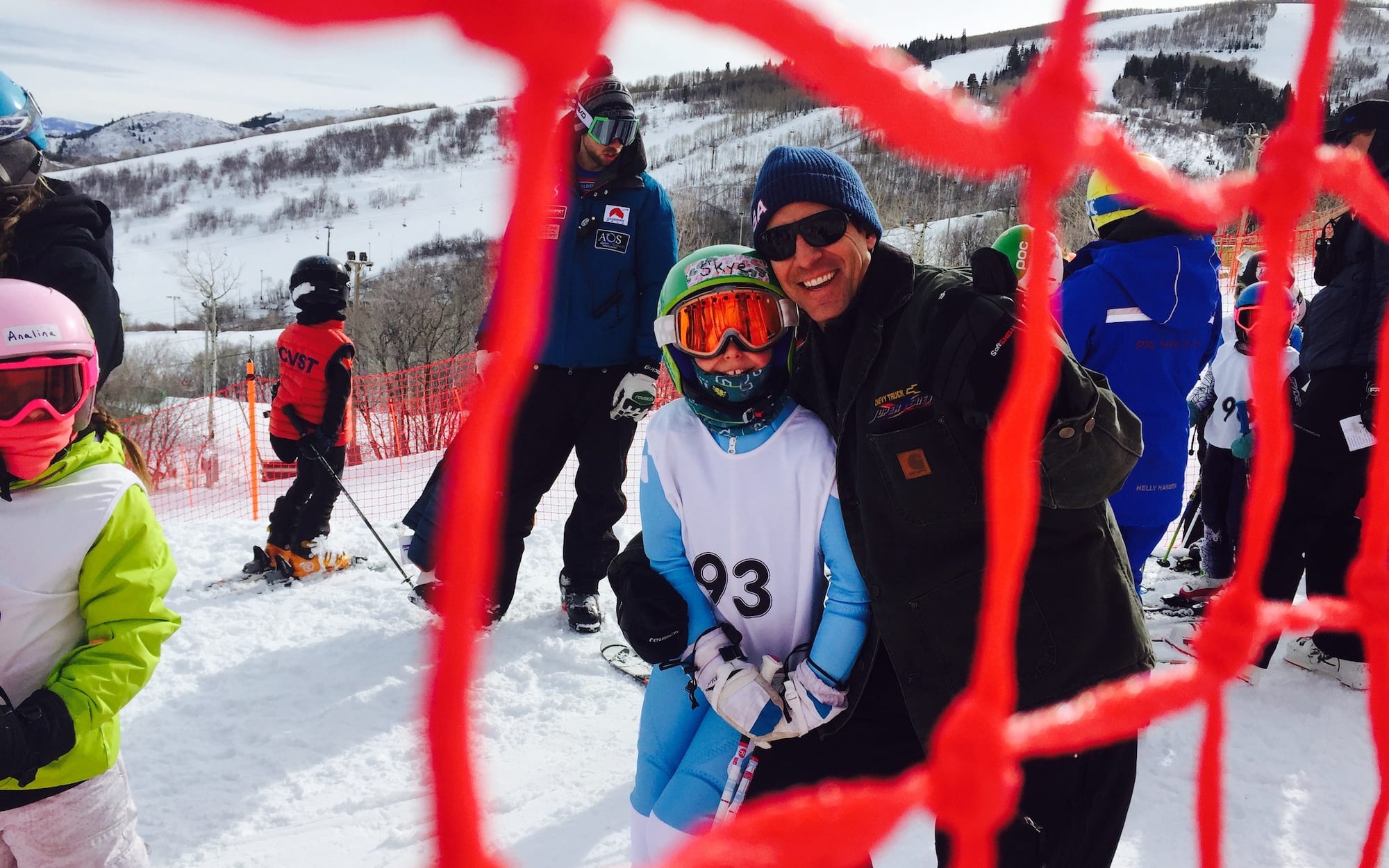Julia Mancuso’s $10,000 Crowdfunding Campaign Raises Questions
Julia Mancuso, a four-time Olympic medalist, struggled with hip pain for years. And when the pain intensified, she worked with U.S. Ski Team trainers to try to relieve it. But the non-surgical approach had little impact coming into the 2015-2016 season, so the American skier opted for more extreme measures: surgery.
That surgery has put her off the World Cup circuit this season, and landed her on the beaches of Hawaii to recover and prepare for the PyeongChang 2018 Olympic Winter Games. Her exotic location choice put her outside the geographical range of the U.S. Ski Team’s medical resources, which are primarily based on Park City, Utah.
Last month, Mancuso launched a crowdfunding campaign to meet the financial challenges of funding her own rehab. The campaign had a $10,000 goal, which she reached — and exceeded — in only a couple of days.
“I’ve always paid for my own rehab and I’ve brought my own physical therapist on the road,” says Mancuso, “so it’s not so much that there’s really a cap, but realistically, when I reached the $10,000 mark, I figured that it would be really cool to reach out to other people, so my teammate Leanne Smith is one of the athletes that I am going to help support with rehab.”
The crowdfunding campaign, while widely supported, left people wondering, “What resources does USSA provide for injured U.S. Ski Team athletes?”
1. On-site physical therapy at the Center of Excellence
Kyle Wilkens runs the medical team at the USSA Center of Excellence in Park City, overseeing everyone from volunteer doctors who travel with teams to World Cup events to physical therapists armed and ready at the Center of Excellence.
“We’re operating a PT clinic here at the Center,” Wilkens says. “Not only is it advantageous for us to do it that way from an efficiency perspective and being able to have all our resources — medical, strength and conditioning, school — here at our disposal. We can really, with all the resources that we have here, make a comprehensive program for the athletes.”
Part of that program is the physical therapy, an expensive endeavor for athletes.
“The other advantage that we have is because we don’t bill for those PT services, we can spend as much time as is needed on the athlete here, more so than they may be able to get a PT clinic at their home where insurance might let them bill for a few sessions a week,” says Wilkens. “So we can really do a more thorough job here.”
Those costs were one of the reasons Mancuso was counting pennies. She uses a private trainer in Hawaii with whom she has worked with for a long time — well before the Center of Excellence was built, though she did have the option to use Park City-based resources.
“Insurance only covers 40 rehab visits anyway,” says Mancuso, “and, of course, if I’m going to rehab every day for six months, that’s a lot more than 40.”
2. Access to the USSA Medical Network
“Medical services are provided to A, B, and C Team athletes in all sports,” explains the U.S. Ski Team website. “Each sport is allocated a head team physical therapist (PT) and/or certified athletic trainer (ATC) to medically manage athletes under the guidance of the team physician and medical director.”
In addition to these appointed staff members, USSA engages a network of doctors such as psychologists — an important, but often missed resource in the recovery process.
“We don’t have one on staff,” Bodensteiner explains. “We have a consultant group that we use, and they’re all predominantly based here in Utah, but they’re essentially contractors. We have them retained for a certain number of times during the year.”
Other participants in the medical network include the Steadman Clinic in Vail, Mt. Tam Orthopedics in Larkspur, Calif.; and Olympic Physical Therapy in Seattle, Wash. There are also resources available in Mancuso’s home of Lake Tahoe.
Mancuso has worked with Howard Head Sports Medicine, the sport-injury arm of the Steadman Clinic, and calls it an “amazing” rehab facility. Still, she’s chosen to do most of her rehab in Hawaii — outside of USSA’s current medical network.
“I’ve been doing my own rehab program for the whole time I’ve been on the U.S. Ski Team,” she says. “It’s important for me to stay in one place and really take advantage of the healing and relaxation. I’m 31 years old. I’ve been traveling for 15 years, so being able to be home and do my rehab is also a big mental part of the game.”
3. Health insurance, if you’re on the A or B Team
“Every A and B team member has what’s called Elite Athlete health insurance, which is provided through a USOC program,” Bodensteiner explains. “It’s no cost to the athlete, so that provides their primary medical coverage. And then we carry what’s called a secondary accident sport insurance policy essentially, which is more geared toward sport-related injuries that piggy-back on the athlete’s insurance.”
Mancuso, who has been on the A Team, still had medical expenses because of deductibles, which can add up to around $5,000 for most athletes, she says.
So, insurance will not cover everything for a U.S. Ski Team athlete, but for those on the A and B Teams, it can help with costs.
4. Opportunities for higher education
When athletes are unable to ski and are staying in one location, they have newfound time on their hands. That’s when the U.S. Ski Team suggests going back to school.
“An injury is often a time where we’re really encouraging the athletes who haven’t finished university yet to enroll in Westminster or take online classes with another college partner,” Bodensteiner says. “And we’ve got resources to help offset the cost of that tuition. We try to take advantage of the time that way.”
There are no athlete lodging facilities, however, at the Center of Excellence.
“That’s certainly one of the limitations we’ve had with the Center,” Bodensteiner confessed. “We don’t have athlete housing here. It’s something we’ve discussed, we’ve debated about whether that’s the right move or not.”
In the meantime, the U.S. Ski Team helps athletes find solutions with local athletes, families and other short-term options.
Mancuso says that her recent campaign has inspired her to help the U.S. Ski Team find better long-term recovery plans for ski racers. “There could be a lot of improvement with pooling resources,” she says, “and really connecting with the rehab centers and making plans.”
Correction: The original article incorrectly identified the Elite Athlete health insurance provider as USSA when it is, in fact, offered by the USOC.

























